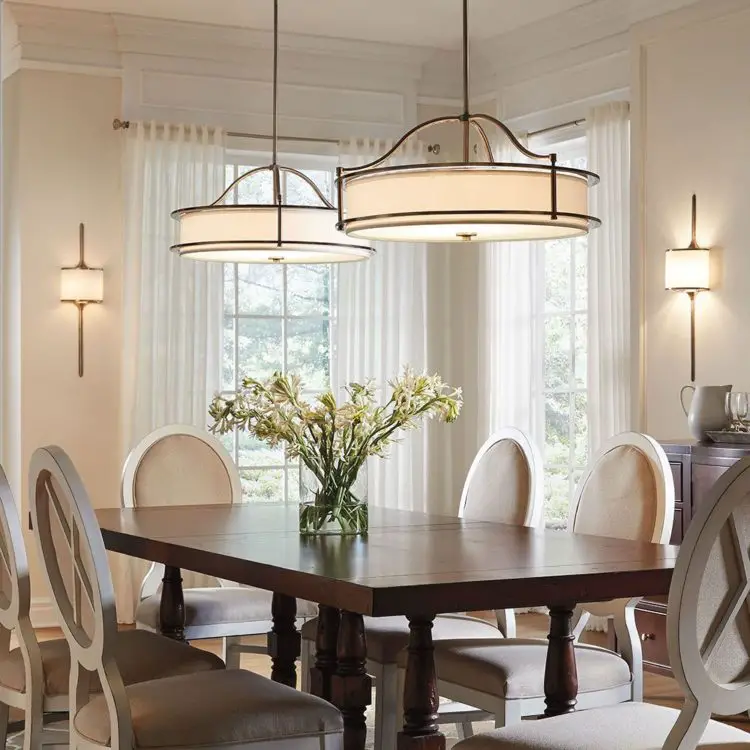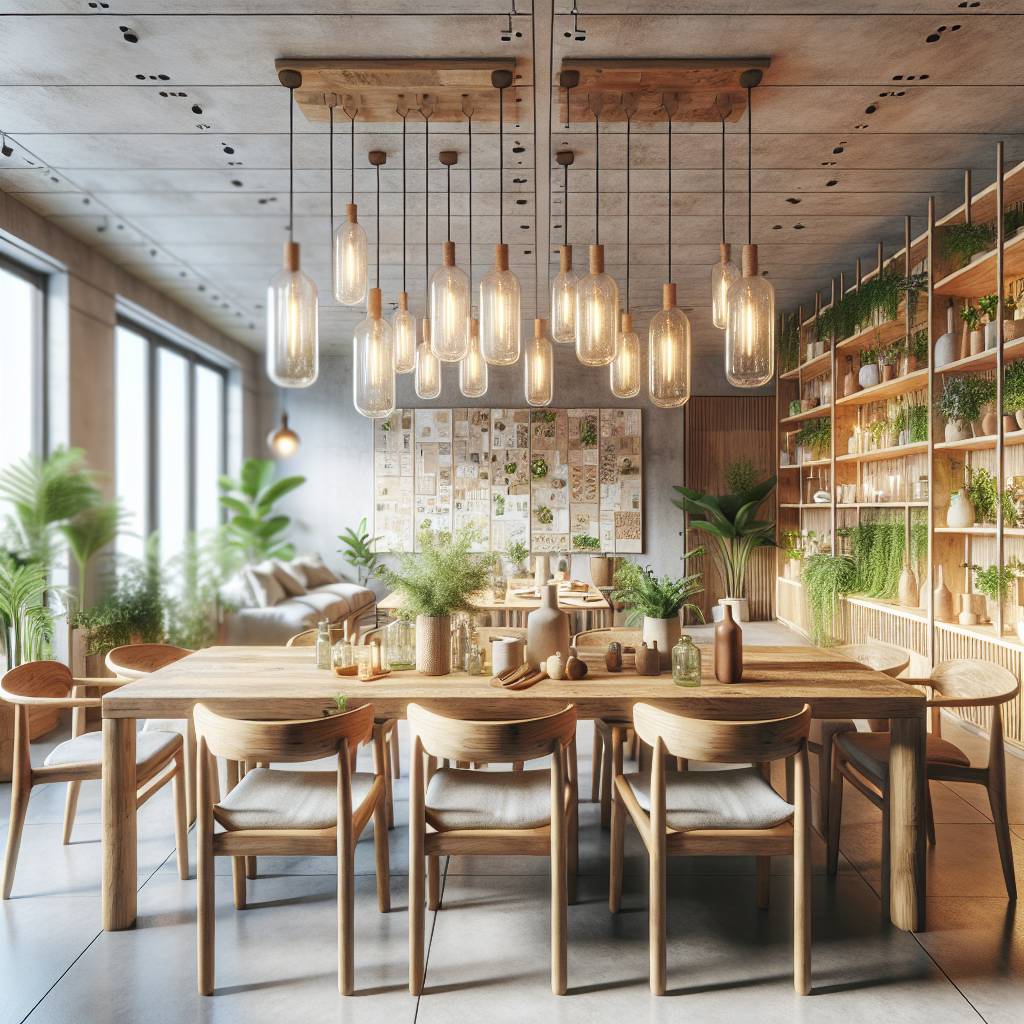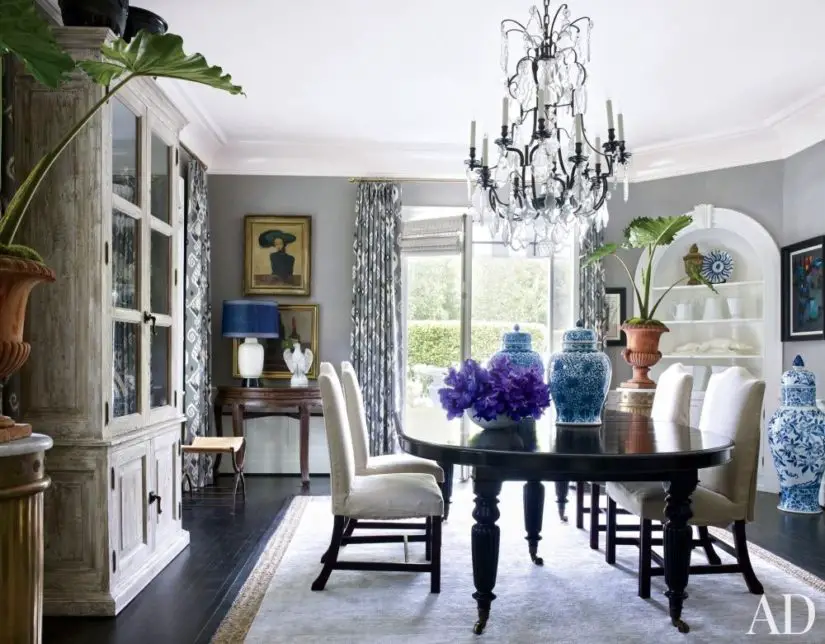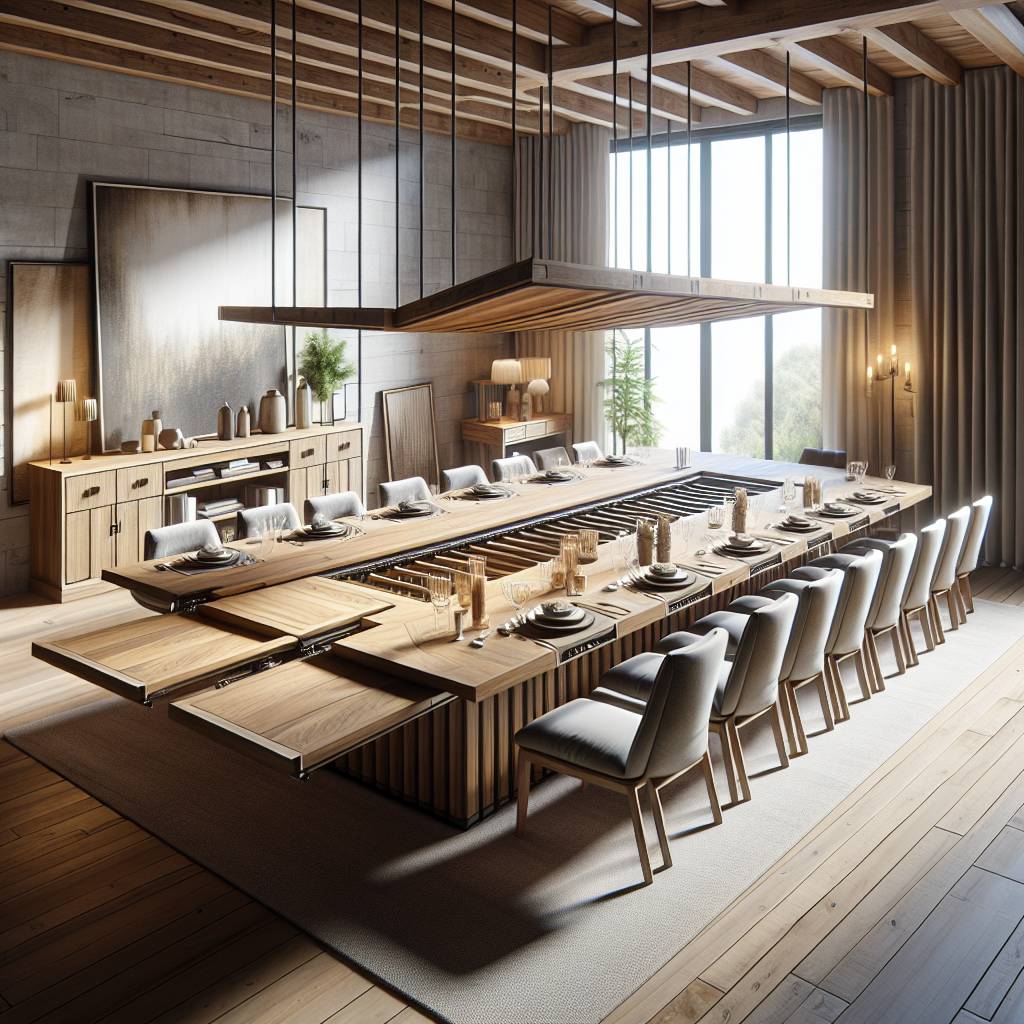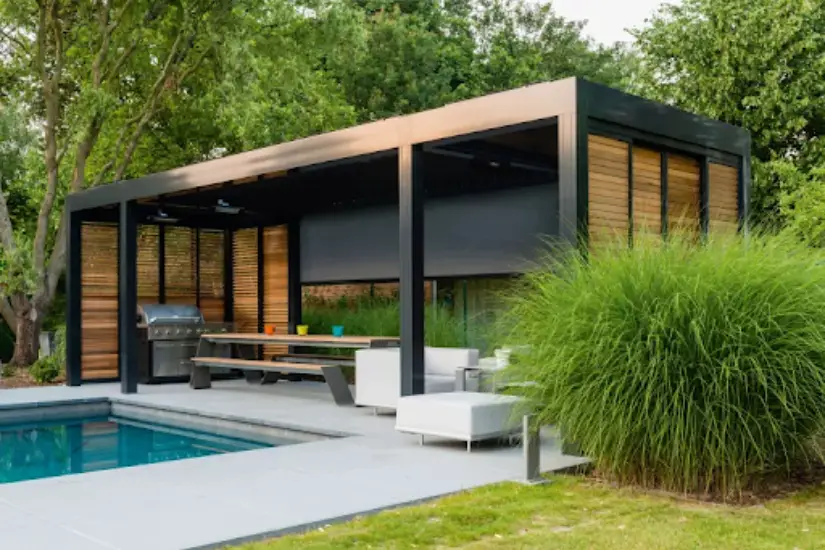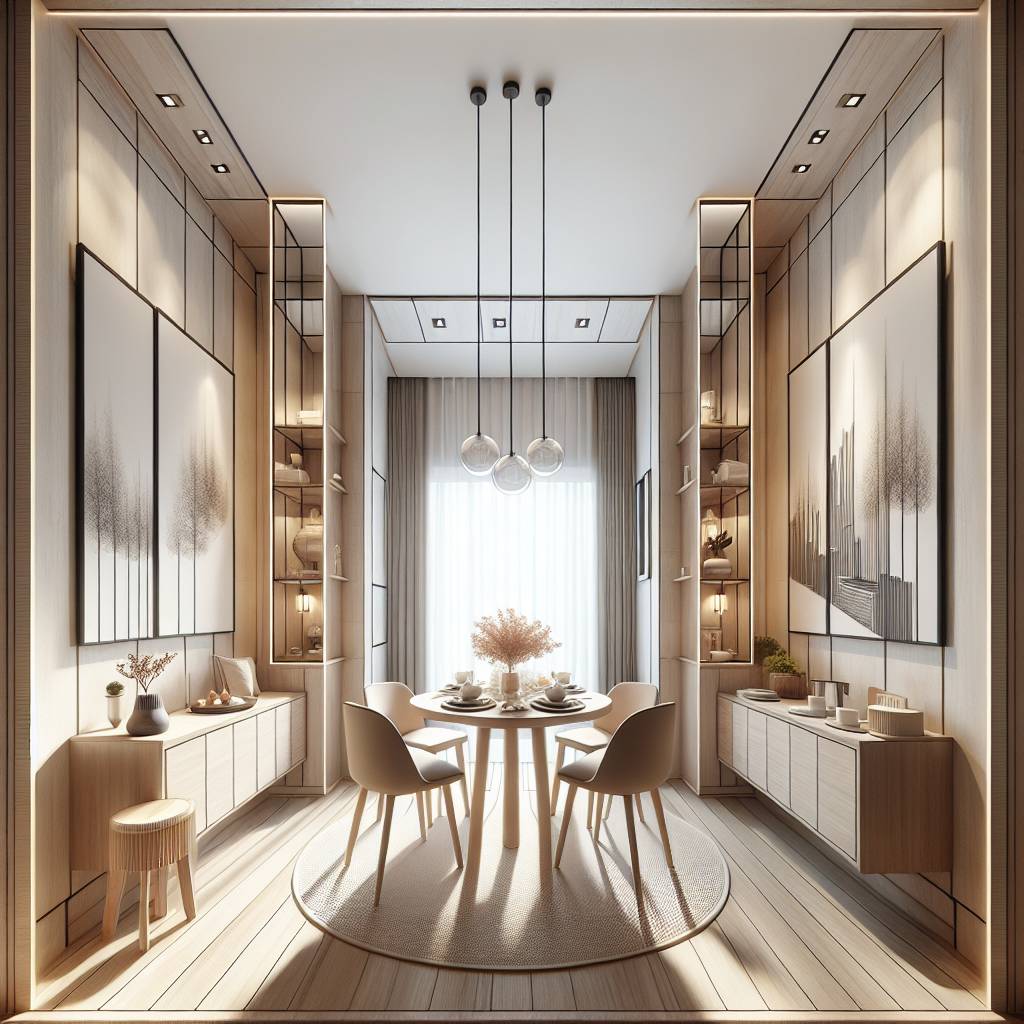A dining room light fixture does more than just brighten your eating space. For many designers and homeowners alike, this installation is like the centerpiece in dining room aesthetics.
Just walk into any well-furnished dining space and you’ll love the mood and ambiance its light fixture inspires.
And that’s not all, our mouths water to the looks and aroma of the delicacies on the table. In other words, the more you can see, the more you want it.
It’s no wonder we spend plenty of time on food plating (the art of arranging & decorating food items on a plate to appeal more to the eye and boost the dining experience).
And since we can see everything in a well-lit space, we may as well say dining room lights can have an impact on one’s appetite or need for food.
So where do you begin with a dining room lighting project? How do you identify the right type of lighting for your design? And what are some best practices when installing light in your dining space?
Dining Room Light Fixture: The 4 Factors to Consider
Homeowners must adhere to the basic design principles for Installing dining room lights. For instance, your chandelier or pendant must be installed in a strategic location to light up the whole table. It must also fit well into your dining room’s design.
Below are other top factors to consider:
1. Where should you place it?
As hinted earlier, dining room lights serve as a centerpiece to a dining table. No matter your layout or design, be sure to hang these lights at the center of the dining table.
Alternatively, you can base your design on wall lighting, i.e., by adding sconces, if your dining room sits near a wall or in between pillars.
2. How high?
Height is another crucial consideration when suspending dining room lights to illuminate your food table.
In essence, the fixture should be high enough as not to obstruct other elements of your home aesthetics but low enough to brighten up the space properly.
For more accurate placement, hang your chandelier or pendant 28 to 36 inches over your dining table.
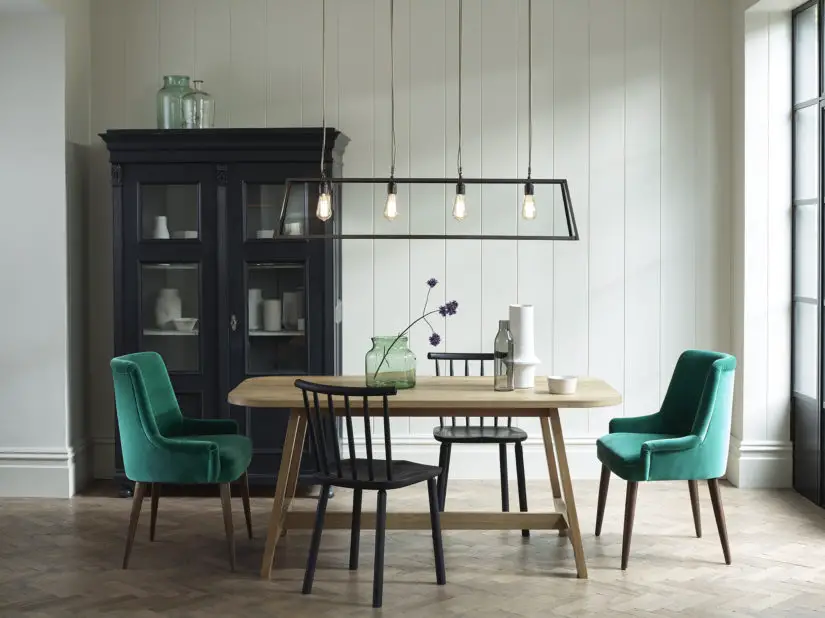
3. Which type/style of dining room light?
Style is a matter of personal preference. However, it’s crucial to note that some types of lighting are best suited for certain dining room designs/themes.
Homeowners have multiple options to choose from:
● Pendants
Pendants draw their beauty from their simplicity. They are a contemporary dining room light fixture to spruce up any space.
Though some come as a single statement unit, others look better in groups and must be arranged to fit into the design.
Centrally-placed statement pendants go well with round dining tables. But if you have a rectangular table, consider hanging 2 to 3 pendants along the table’s length.
● Chandeliers
These are a classic lighting addition to dining rooms. Placed to hang centrally above the dining table, chandeliers come in different styles, both rustic, minimalist, and ultra-modern versions to fit different themes.
When hanging yours, consider your table size. As a rule of thumb, the light’s diameter should be ½ to ⅔ of the table length.
● Sconces
Sconces are a form of wall lighting to consider if you need to illuminate your dining space with something other than overhead lighting.
Often mounted on walls or inhouse pillars, these types of lighting work best for home designs that don’t have a low lying ceiling and features plenty of pillars e.g. the industrial dining room.
Nevertheless, you can also consider it if you have arranged your dining room near a wall.
● Flush-Mounts
Flush mounts come in different styles. As their name suggests, most of them are mounted on ceilings and not suspended to hang.
Flush mounts fit well in dining rooms with low ceilings. However, those with high ceilings can go for those that hang a few inches or choose large statement flush-mounts
4. Ambiance
Though considered a secondary factor when installing a dining room light fixture, ambiance plays a primary role in setting the mood. While the goal is to illuminate your eating space, sometimes the gathering or occasion demands a lower ambiance.
Varying the ambiance of your dining room lights allows you to set the right mood for the event.
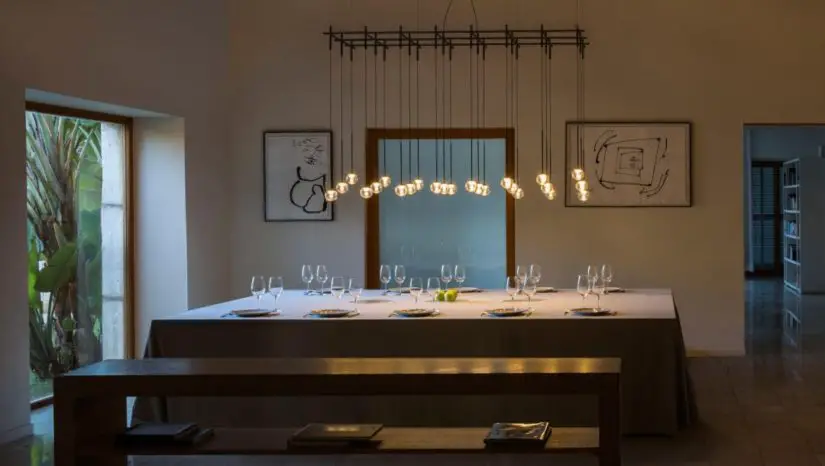
Final Words on Dining Room Light Fixture
Proper dining room lighting has a positive effect on appetite and the dining experience. It also boosts your home’s aesthetics and marks out the space as an eating zone.
To install your dining room lights correctly, always invite a home design expert. These professionals will help you identify a style and ambiance that matches your existing design. Furthermore, they understand the correct placements based on space and the shape of your dining table.
Lastly, they can help blend the dining room fixtures with the other forms of lighting in your home to create a uniform design.
